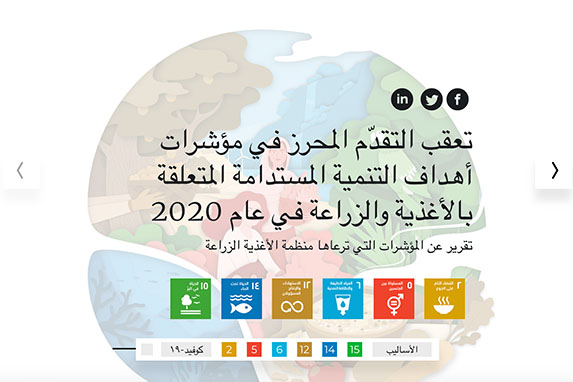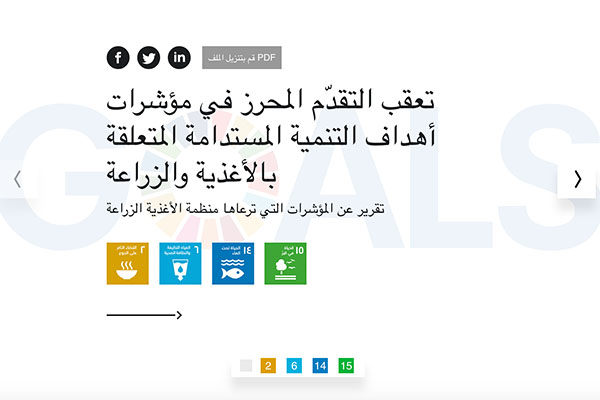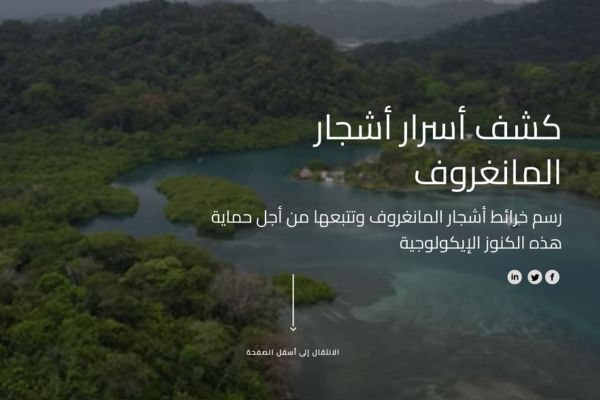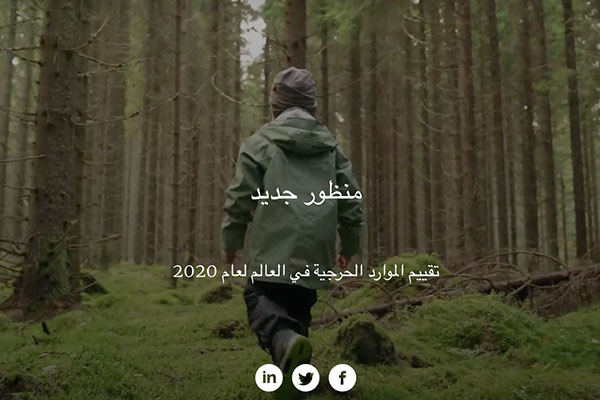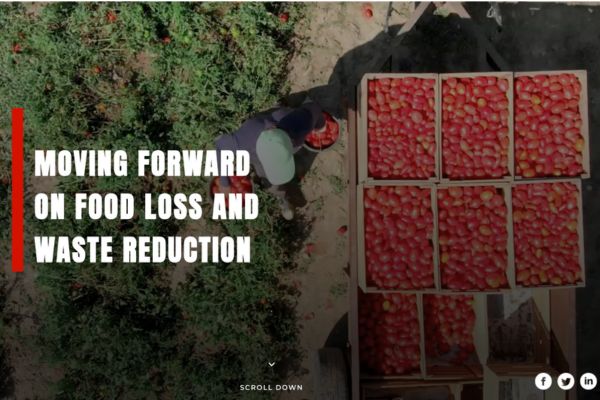تفاعليات
الأحدث
اتباع مسار البذور
كل بذرة تحمل قصة أمل
2024
إن الحفاظ على تنوع المحاصيل والبذور في سلتنا الغذائية العالمية يقع في صميم ضمان الأمن الغذائي والتغذوي. اكتشف كيف!
تسخير التكنولوجيا والابتكار لتحويل غاباتنا
أحد أعظم موارد كوكب الأرض، لكنّ تغيّر المناخ والأثر البشري يشكّلان تهديدين متزايدين
2024
تعهّد قادة العالم بوقف إزالة الغابات واستعادة مليار (1) هكتار من الأراضي المتدهورة بحلول سنة 2030. وتحقيقًا لذلك، تحتاج البلدان إلى البيانات الحرجية الصحيحة لقياس التقدم وتمكين الإجراءات على أرض الواقع. هنا تكمن أهمية أداة Open Foris التابعة لمنظمة الأغذية والزراعة.
لا يحظى الجميع بالفرص نفسها في النظم الزراعية والغذائية
وضع المرأة في النظم الزراعية والغذائية
2023
تلعب النساء دوراً حيوياً في النظم الزراعية والغذائية، ولكن ظروف عملهن وفرصهن الاقتصادية تتأثر بعدم المساواة بين الجنسين. استكشف القصة التفاعلية #لننمي_المساواة
ما وراء بطاقة الأسعار
دراسة التكاليف المستترة للنظم الزراعية والغذائية من أجل تحسين قيمتها الحقيقية
2023
اكتشف التكاليف الخفية وراء فاتورة مشترياتك من البقالة! اقرأ القصة التفاعلية من فاو لاستكشافها
الأمن الغذائي
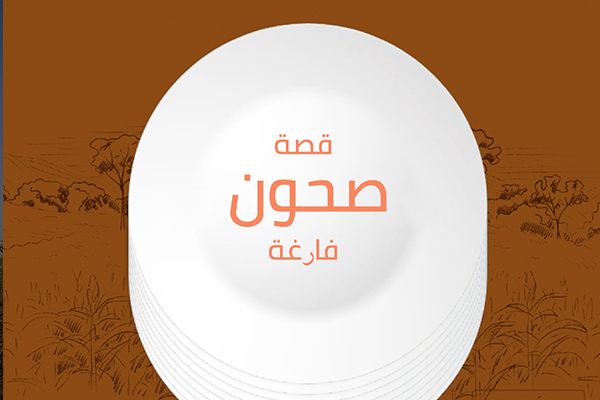
قصة صحون فارغة
الأمن الغذائي والتغذية حول العالم
2022
اطلع على آخر التحديثات حول الوضع العالمي. حان الوقت لوضع حد لقصة الصحون الفارغة
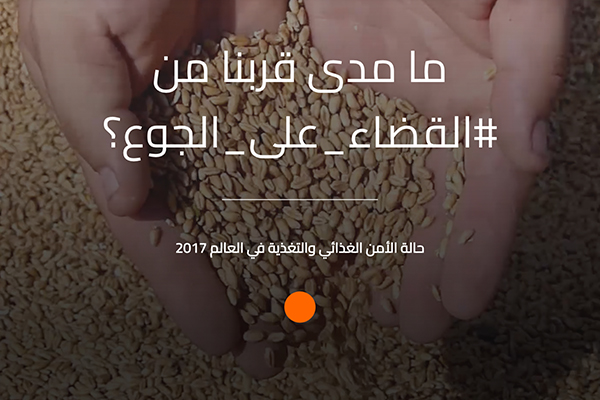
حالة الأمن الغذائي والتغذية في العالم
بناء القدرة على الصمود لتحقيق السلام والأمن الغذائي
2017
يحذر تقرير حالة الأمن الغذائي والتغذية في العالم لهذا العام من أن الاتجاه التنازلي طويل الأجل في قصور التغذية قد توقف على ما يبدو، وربما يكون قد انعكس، حيث يعود ذلك إلى حد كبري إلى العوامل المذكورة أعلاه. وفي غضون ذلك، وعلى الرغم من استمرار إحراز تقدّم للحد من سوء تغذية الأطفال، يشكل ارتفاع الوزن الزائد والبدانة مصدر قلق في معظم أنحاء العالم.
التغذية المدرسية
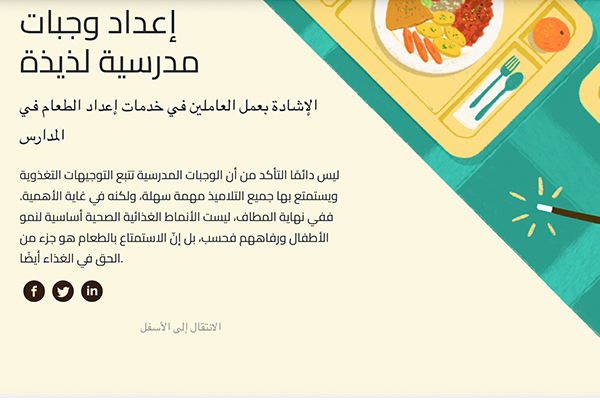
إعداد وجبات مدرسية لذيذة
الإشادة بعمل العاملين في خدمات إعداد الطعام في المدارس
2023
ليس دائمًا التأكد من أن الوجبات المدرسية تتبع التوجيهات التغذوية ويستمتع بها جميع التلاميذ مهمة سهلة، ولكنه في غاية الأهمية. ففي نهاية المطاف، ليست الأنماط الغذائية الصحية أساسية لنمو الأطفال ورفاههم فحسب، بل إنّ الاستمتاع بالطعام هو جزء من الحق في الغذاء أيضًا.
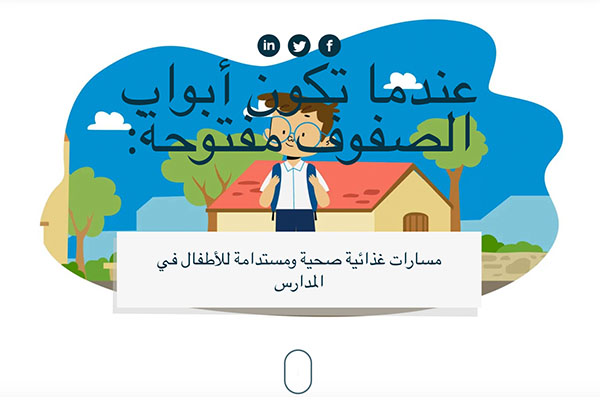
عندما تكون أبواب الصفوف مفتوحة
2021
مسارات غذائية صحية ومستدامة للأطفال في المدارس
بالنسبة لأطفال المدارس والمراهقين، تعتبر النظم الغذائية الصحية ضرورية للنمو والتطور والحماية من الأمراض. إليك كيف يمكننا جميعًا لعب دورنا لضمان التغذية المدرسية الصحية.
الشراكات وأهداف التنمية المستدامة
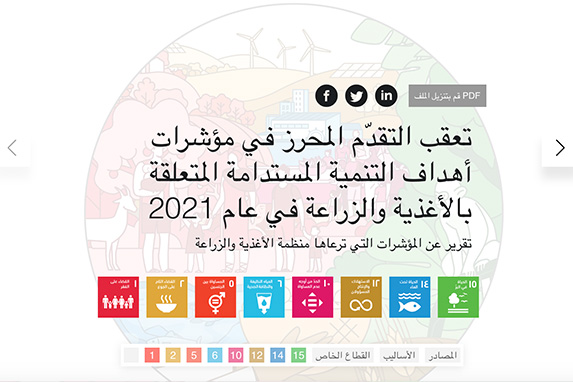
تعقب التقدّم المحرز في مؤشرات أهداف التنمية المستدامة المتعلقة بالأغذية والزراعة في عام
تقرير عن المؤشرات التي ترعاها منظمة الأغذية والزراعة
2021
كان عام 2020 سنة استثنائية في التاريخ الحديث. وعاث فيروس كوفيد-19 خرابًا في جميع أنحاء العالم، مسببًا آثارًا مدمرة على الصحة والاقتصاد على حد سواء، وأثر بشدة على كل جانب من جوانب حياة الإنسان. وهزت الجائحة بالفعل خطة عام 2030 للتنمية المستدامة في الصميم، ومع استمرار تفشيها، لا يزال تأثيرها الكامل على التقدم المحرز صوب تحقيق أهداف التنمية المستدامة غير معروف.
هل تريد معرفة المزيد عن عملنا نحو تحقيق أهداف التنمية المستدامة؟ اطلع على التقارير المرحلية من عام 2022 فصاعدًا.
الموارد - الشراكات - الآثار
2020
يظهرتقرير الموارد - الشراكات - التأثيرات 2020 كيف عملت منظمة الأغذية والزراعة بالتعاون مع العديد من أصحاب المصلحة في عام 2019، لتعظيم الشراكات لتحقيق نتائج أكبر على أرض الواقع.
تتبع التقدم المحرز في مؤشرات أهداف التنمية المستدامة المتعلقة بالأغذية والزراعة
2020
يفصل هذا التقرير التقدم الذي أحرزناه خلال العام الماضي نحو تحقيق الأهداف تحت رعاية منظمة الأغذية والزراعة، بما في ذلك الهدف 2 (القضاء على الجوع) والهدف 5 (المساواة بين الجنسين) والهدف 12 (الاستهلاك والإنتاج المسؤولان).
تتبع التقدم المحرز في مؤشرات أهداف التنمية المستدامة المتعلقة بالأغذية والزراعة
2019
في أول تقرير رقمي مرحلي عن أهداف التنمية المستدامة، تعرض منظمة الأغذية الزراعة بيانات واتجاهات رئيسية لـ 18 من 21 مؤشرا يقعون تحت رعاية المنظمة.
الهجرة والتنمية الريفية

تسخير التكنولوجيا والابتكار لتحويل غاباتنا
أحد أعظم موارد كوكب الأرض، لكنّ تغيّر المناخ والأثر البشري يشكّلان تهديدين متزايدين
2024
تعهّد قادة العالم بوقف إزالة الغابات واستعادة مليار (1) هكتار من الأراضي المتدهورة بحلول سنة 2030. وتحقيقًا لذلك، تحتاج البلدان إلى البيانات الحرجية الصحيحة لقياس التقدم وتمكين الإجراءات على أرض الواقع. هنا تكمن أهمية أداة Open Foris التابعة لمنظمة الأغذية والزراعة.
كشف أسرار أشجار المانغروف
رسم خرائط أشجار المانغروف وتتبعها من أجل حماية هذه الكنوز الإيكولوجية
2023
أشجار المانغروف هي أنظمة بيئية تحمينا من تغير المناخ، وتحافظ على التنوع البيولوجي، وتدعم سبل العيش وأكثر من ذلك بكثير. للمرة الأولى، قامت FAO والخبراء برسم خريطة للحالة الحالية لأشجارالمانغروف وكيف تغيرت على مر الزمن.
التقييم العالمي لموارد الغابات
2020
منظور جديدهل تعلم أن الغابات تغطي ما يقرب من ثلث الأراضي على مستوى العالم؟ يدرس التقييم العالمي لموارد الغابات 2020 حالة واتجاهات هذه الموارد الحرجية عبر 236 دولة وإقليم من 1990 إلى 2020
الهجرة والتنمية الريفية
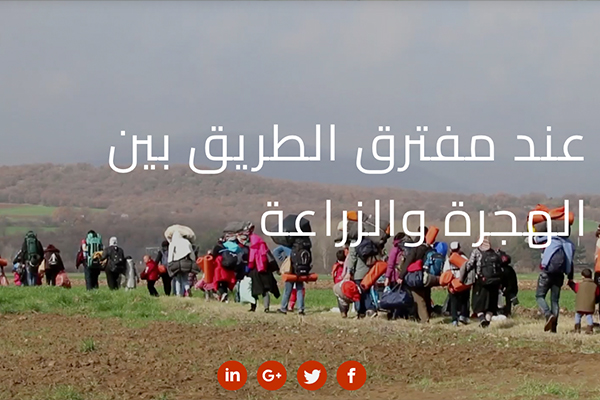
حالة الأغذية والزراعة الهجرة والزراعة والتنمية الريفية
2018
يعرض هذا التقرير استراتيجيات من شأنها أن متكن من الاستفادة من طاقات النظم الغذائية الكامنة لتصبح محرك التنمية الاقتصادية والازدهار الريفي الشاملين في البلدان المنخفضة الدخل. وهو يتضمن تحليلاً للتحولات الهيكلية والريفية الجارية حاليًا وينظر في الفرص والتحديات التي تتيحها للملايين من صغار منتجي الأغذية. ويظهر كيف أن التخطيط ”الزراعي والمكاني“ الذي يركّز على ربط المدن والبلدات والمناطق الريفية المحيطة بها، مصحوبًا بتنمية زراعية وصناعية وللبنى التحتية قادر على توليد فرص للدخل على امتداد قطاع الأغذية وأن يشكل الأساس الذي يقوم عليه التحول الريفي الشامل والمستدام.

تسخير التظلم الغذائية من أجل تحقوّل ريفى شامل
2017
ويعرض هذا التقرير اسرتاتيجيات من شأنها أن متكن من االستفادة من طاقات النظم الغذائية الكامنة لتصبح محر ًا ّ االقتصادية واالزدهار الريفي الشاملني يف البلدان املنخفضة الدخل. وهو يتضمن تحليالً للتحوالت الهيكلية والريفية الجارية حالي ّ وينظر يف الفرص والتحديات التي تتيحها للماليني من صغار منتجي األغذية. ويظهر كيف أن التخطيط ”الزراعي واملكاين“ الذي يركّز ًا بتنمية زراعية وصناعية وللبنى التحتية قادر عىل توليد فرص للدخل عىل ربط املدن والبلدات واملناطق الريفية املحيطة بها، مصحوب عىل امتداد قطاع األغذية وأن يشكل األساس الذي يقوم عليه التحول الريفي الشامل واملستدام.
حالات الطوارئ والصمود
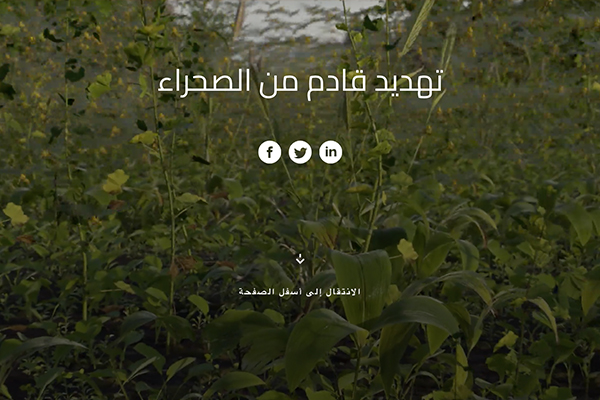
تهديد قادم من الصحراء
الجراد الصحراوي
2022
لكن ما هو الجراد الصحراوي ولم هو خطِر بهذا القدر؟ فلنلقِ نظرة ثاقبة وشخصية على هذه الآفة.
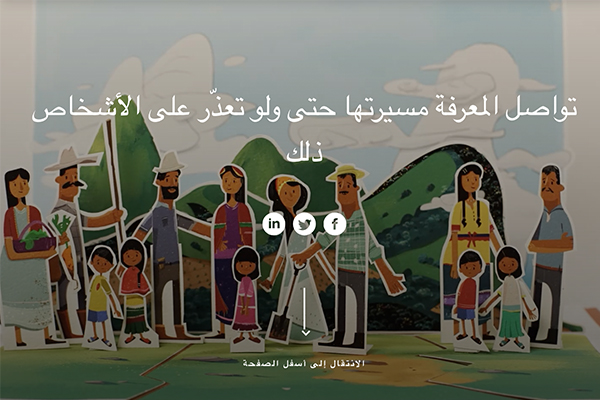
تواصل المعرفة مسيرتها حتى ولو تعذّر على الأشخاص ذلك
2022
اكتشف كيف يمكن للمجتمعات الريفية المعزولة أن تتحرك في مسار آمن عبر جائحة كوفيد-١٩.
موضوعات أخرى
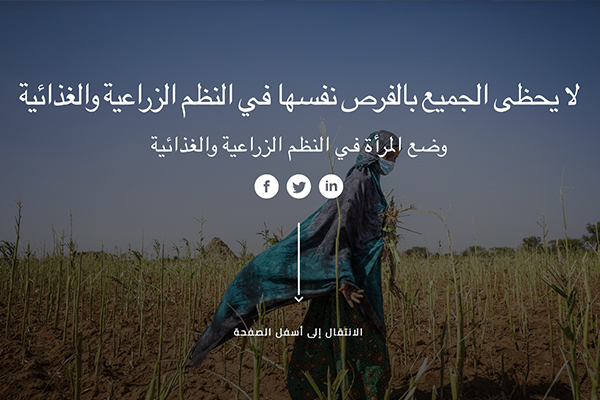
لا يحظى الجميع بالفرص نفسها في النظم الزراعية والغذائية
وضع المرأة في النظم الزراعية والغذائية
2023
تلعب النساء دوراً حيوياً في النظم الزراعية والغذائية، ولكن ظروف عملهن وفرصهن الاقتصادية تتأثر بعدم المساواة بين الجنسين. استكشف القصة التفاعلية #لننمي_المساواة
لتغلّب على تحديات المياه في الزراعة
2020
وجودنا يعتمد على المياه. جميعنا بحاجة إلى المياه لشربها ولزراعة المنتجات الغذائية. وتقوم أيضًا النظم الإيكولوجية المتصلة بالمياه بإدامة سبل العيش والأمن الغذائي والتغذية. لكن المياه العذبة تزداد ندرة. قصتنا التفاعلية تلقي نظرة على تحديات المياه في الزراعة وتقدم الحلول المناسبة.
المضي قدما في الحد من فقد الأغذية وهدرها
2019
يقدم التقرير بعض المبادئ التوجيهية للتدخلات بناءً على الأهداف التي يتم السعي لتحقيقها من خلال الحد من فقد الأغذية وهدرها ، سواء أكان ذلك في تحسين الكفاءة الاقتصادية أو الأمن الغذائي والتغذية أو الاستدامة البيئية.


.jpg?sfvrsn=210075ab_1)
